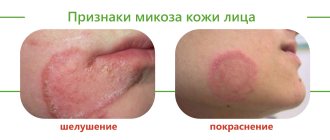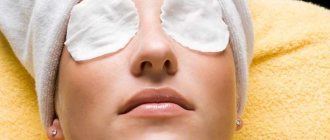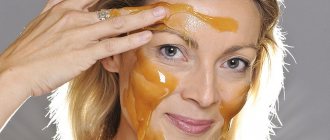Stye is a disease of the eyelid, which is characterized by inflammation in the hair follicle of the eyelash or in the sebaceous gland near its bulb. The medical name of the pathology is hordeolum. It causes discomfort, since a swollen eye with stye looks unattractive and is accompanied by pain when moving the upper or lower eyelid. Pathology can manifest itself regardless of age - in both adults and children. The disease usually affects one eye.
The appearance of stye on the eye occurs unexpectedly. When the inflammatory process develops rapidly, patients are interested in what to do in such a situation. Immediate treatment is required. This violation should not be treated as a temporary inconvenience. Its occurrence indicates that the body’s immune forces are reduced.
Causes and symptoms
Hordeolum occurs due to a bacterial infection. In most cases, this is Staphylococcus aureus - a gram-positive bacterium that can survive on the skin and mucous membranes.
Various factors provoke the appearance of stye on the eye:
- hypothermia, weakened immunity, vitamin deficiency;
- failure to comply with eye and eyelid hygiene rules;
- stressful conditions, lack of proper rest, healthy sleep;
- infectious diseases or recovery period after them;
- the presence of other problems with the organs of vision - conjunctivitis, blepharitis;
- elevated levels of lipids in the blood.
The use of low-quality cosmetics or wearing contact lenses can also become factors provoking the disorder, but they are not the root cause of the pathological process.
The main symptoms of the pathology:
- itching and burning of the eyelid, increased tearfulness;
- sensation of a foreign object under the eye;
- redness, swelling, hardening of the lower or upper eyelid;
- pain when touching the damaged area and when blinking;
- pus in the form of a yellowish head on the swelling;
- sometimes – inflammation of the nearest lymph nodes, fever.
Table of contents:
Causes of cyst manifestation
Where are eye cysts located?
Types of cysts Clinical symptoms Diagnosis of the disease Methods for removing an eye cyst Treatment of an eye cyst with a laser Procedure for laser removal Contraindications A benign tumor on the eyelid or mucous membrane containing fluid inside is called a cyst. Translated from Greek - “bubble”. It occurs in representatives of both sexes and all age categories. Quite often this formation is diagnosed in children. When it appears, you should definitely see a specialist to develop further treatment tactics. If left unattended, it can have a bad effect on the quality of vision.
If you do not contact the clinic to solve the problem, then:
- visual acuity decreases;
- eye mobility worsens;
- profuse lacrimation appears;
- frequent headaches occur;
- there is a possibility of developing into a malignant formation.
Is stye contagious?
It is not dangerous for others, but only if basic hygiene rules are followed. The risk of infection usually occurs in young children. Due to their age, they do not yet understand the importance of hygiene and therefore often suffer from bacterial infections. Infection is also possible when the patient uses cosmetics. But in general, isolation of an adult or child suffering from hordeolum is not required.
The causative agents of the disease are found in pus located in the barley sac. There are no bacteria on the surface. But there is usually little pus inside, so even a burst stye is not dangerous. In 80% of cases, the abscess breaks out at night when the patient is sleeping. If purulent masses end up anywhere, it is on a person’s face, his pillow, or bed linen. The infection does not spread further.
Papilloma
The causative agent of benign formations called “papillomas” is human papillomavirus. Most often, infection with this virus occurs during birth from mother to child, but the disease can also be acquired during life through contact with infected people. The virus can appear on almost any area of the skin and mucous membranes in the form of round growths. Papilloma is usually painless. However, it can hardly be called “aesthetically attractive”, so it causes significant discomfort.
You can distinguish papilloma from other types of formations by the following characteristics:
- the cone is more like a ball on a stalk or has a mushroom-like shape;
- the wart-like growth has a rough surface that resembles the surface of cauliflower to the touch.
It is worth noting that a growth with a smooth surface is not a papilloma, and it must be examined by an oncologist.
Treatment of papillomas should be comprehensive. Surgical removal is performed by a dermatologist. He also examines the type of virus and prescribes drug treatment. The fact is that the manifestation of a disease at one point does not mean that the entire body is not infected. The virus is suppressed by the immune system, but travels through the bloodstream. Some types of human papillomavirus are very dangerous with a high probability of degeneration of skin formations. Only an experienced dermatologist can prescribe adequate treatment based on diagnostic results. Measures to improve overall immune status are essential in the treatment of papillomas.
Types and stages of development of hordeolum
Depending on the location of the lesion, it can be of the following types:
- External stye
. More common according to statistics. The infectious-inflammatory process is localized at the edge of the eyelid, since the infection settles in the sebaceous gland of Zeiss or in the ciliary bulb. - Internal stye on the eye
. It has another name - meibomite. It is caused by the penetration of pathogenic microorganisms into the passage of the meibomian glands located on the back side of the eyelid margin.
By type they distinguish:
- Hot barley
. It is characterized by the classic development of the disease; infection is localized in the ciliary pocket - the bulb or Zeiss gland. With therapy it goes away in about a week. - Cold stye (chalazion, meibomian cyst)
. The inflammatory process affects the meibomian glands. It develops very slowly. Recovery takes 1–2 months. If there is a very large stye, surgical removal is possible.
Inflammation goes through the following stages:
- Formation of a purulent core
. A small reddish swelling causes discomfort when moving the eyelids. - Formation of an abscess
. The patient’s condition at this stage can only be alleviated by medications. - Breakthrough of pus.
It does not indicate recovery, but the patient feels much better. During this period, you need to keep your eyes clean and use prescribed medications and ointments.
Diagnosis of the disease
- Visual inspection;
- control of intraocular pressure;
- assessment of visual fields and visual acuity;
- determining the state of the optic nerve and the state of the retinal vessels;
- establishing the exact location;
- establishing the composition of the liquid inside the bubble.
The ophthalmologist uses methods such as tonometry, perimetry, biomicroscopy, ultrasound, computed tomography and magnetic resonance imaging to make a diagnosis. The cyst is visible to the naked eye; additional studies are required to establish the general picture of the disease and exclude the malignancy of the tumor.
How to quickly cure stye
If barley appears on the eye, how to treat it depends on the stage of development of the infection. If you take action at the initial stage, there is a chance that the inflammation will not spread and the swelling will go away in 1-2 days. For this:
- Treat the problem area with an antiseptic. Suitable medical alcohol, which is diluted with water in a 1:1 ratio, a solution of brilliant green or iodine, and calendula tincture.
- Perform dry heating. To do this, heat sea salt or any cereal in a frying pan. You can take a hard-boiled egg. The selected heat source is wrapped in a clean cloth and applied to the inflamed area until the compress has cooled.
If inflammation does develop, it is better to consult a doctor, since treatment of barley with medication is necessary. Purulent masses must come out of the affected area. If this does not happen naturally, the abscess cannot be squeezed out, so as not to infect the blood and other organs. In such cases, the ophthalmologist makes a puncture under sterile conditions. It leaves no scar.
To destroy bacteria, drops from barley in adults are used - Tobrex, Albucid, Levomycetin, Vigamox, Gentamicin. They are instilled 3–5 times a day. It is important not to let the bottle touch your eye.
Quick treatment of stye at home is ensured by combining drops with antibacterial ointments. The latter are placed at night, as they can temporarily reduce vision. But when purchasing them at the pharmacy, be sure to specify that you need the drugs specifically for the eyes. Many of these medications are also produced for the skin; the content of active substances in them is higher, which can harm the visual system. These include Tetracycline, Syntomycin, Hydrocortisone, Erythromycin, Maxitrol.
How long barley goes away depends on the type of pathology. The internal one takes longer to treat than the external one - complete recovery requires from 1 month.
Millums (millet)
This type of bump occurs with equal frequency on the upper and lower eyelids. Millet grains can range in size from a poppy seed to a grain of rice and usually form in groups. Millums are the most harmless of all formations and cause only aesthetic discomfort. At its core, these are whiteheads localized in the eyelid area.
Millet removal should only be done by a cosmetologist. Since they do not carry the risk of complications, they are not considered an ophthalmological disease, but fall within the competence of a dermatologist-cosmetologist.
Prevention of millums includes caring for the eyelids, timely removal of dead epidermal cells, ensuring the cleanliness of the ducts of the sebaceous glands and pores of the skin around the eyes, as well as a balanced diet that excludes excessive consumption of fatty foods.
Preventive measures
Prevention includes following the recommendations:
- Strengthening immune forces
. This should always be done, not only when there is a threat of hordeolum or in the off-season. It is recommended to take vitamins, give preference to fresh vegetables and fruits, move more, be in the fresh air, and follow a daily routine. - Timely elimination of ophthalmological disorders
. If you are prone to eye diseases, you should regularly visit an ophthalmologist. Self-diagnosis and self-medication usually contribute to the transition of pathology to a chronic form. - Compliance with hygiene standards
. You need to have your own towel, wash your hands with soap, change bed linen every 1–2 weeks, and not use other people’s cosmetics. - Developing the habit of not touching your eyes
. This should not be done even in a normal state, when a person is not bothered by any problems. This rule also applies to the face - you should not touch it during the day with unwashed hands.
Simple preventive measures will help avoid inflammation and keep your eyes healthy.
Methods for removing eye cysts
If you are diagnosed with an eye cyst, surgery will help radically solve the problem. Removing an eyeball cyst within healthy tissue is the most effective method of combating the formation.
- Cauterization with a laser beam is associated with the complete destruction of pathological cells. As a result, the likelihood of relapse is guaranteed to be low. The laser has a disinfecting and anti-inflammatory effect. Due to its undeniable advantages, if there are no contraindications, preference is given to this method. But if the formation is large, a significant number of laser pulses will be required, which will injure the surrounding tissue. Therefore, lasers with a shallow penetration depth are chosen, which makes it possible to remove only small formations, less than three millimeters in diameter.
- Surgical method.
Indications for surgical removal:
- medications do not have an effective effect;
- type of cyst;
- complicated neoplasms;
- pediatric dermoid cysts;
- a large or rapidly growing cyst.
Dermoid cysts do not respond to traditional treatment. This is a purely surgical diagnosis.
A cyst is a filled cavity measuring up to three millimeters or more. May consist of one or more chambers. When removing it, it is important not to disturb the integrity of the capsular bag, otherwise it will collapse, and this will complicate its excision. To clearly indicate its boundaries, markings were made on the outside. But the tear fluid blurs the designated boundaries. In addition, the tissues adjacent to the cyst swell under the influence of the anesthetic fluid, which also interferes with clear recognition of the boundaries. Therefore, to improve the visualization of boundaries, the following surgical technologies are used:
- Perform sequential aspiration of the cyst; based on the area of the collapsed section, it is determined whether it is single-chamber or multi-chamber;
- then the colored preparation is injected inside, giving the formation its previous shape;
- Local anesthesia is administered and the cyst is excised along clearly defined external boundaries.
With all the variety of existing types of neoplasms, only a specialist can choose the right treatment tactics if the patient is treated in a timely manner.
Treatment with medications
Drug treatment is carried out under the guidance of a cosmetologist and strictly according to his recommendations.
- antibiotics
- retinoids
- Tretinoin
- a course of keratolytics - exfoliating drugs. The formations mature, open and heal without leaving a trace.
In addition to medications, salons carry out a number of procedures to effectively remove the rash:
- laser – removes grass for a long time
- electrocoagulation - the price is quite low, and the unwanted rash is effectively removed
- curettage – manual removal of whiteheads.
Retinoids are preparations containing structural analogues of vitamin A, which in its pure form is a rather unstable compound. There are many options for creams that are used to treat acne and wrinkles. The active compounds in creams are powerful antioxidants.
Tretinoin is a first-generation drug containing retinoids.
Not for use during pregnancy and lactation, as it affects the fetus and baby.
Not recommended for severe allergic reactions.
Prevention
White spots under the eyes are a disorder of the body that is more susceptible to people with a genetic predisposition or oily skin. In these cases, the risk of cyst re-formation after removal is especially high.
However, no one is immune from this scourge, so even if there is no problem, you should follow the recommendations:
- Cleanse your face daily, choosing products based on your skin type. Scrub or exfoliate your skin 1-2 times a week. Sometimes wipe your face with a decoction of sage, chamomile, and string to refresh and disinfect.
- Reduce the consumption of salt, flour, sweet, smoked, fatty, spicy, fried foods, canned foods, carbonated drinks, avoid products with aromatic additives, dyes, and introduce fruits and vegetables into the daily menu.
- Limit exposure to the sun.
- Apply only high-quality decorative cosmetics, and be sure to wash them off before going to bed.
- Adopt a healthy lifestyle, stop smoking and do not abuse alcohol.
- If you have vitamin deficiency, do not neglect vitamin-mineral complexes. Vitamins A and E are especially important.
- Monitor your health and undergo regular examinations.
Don't miss the most popular article in the section: Face fitness for facelift, rejuvenation, muscle tone. Master class from Elena Karkukli











